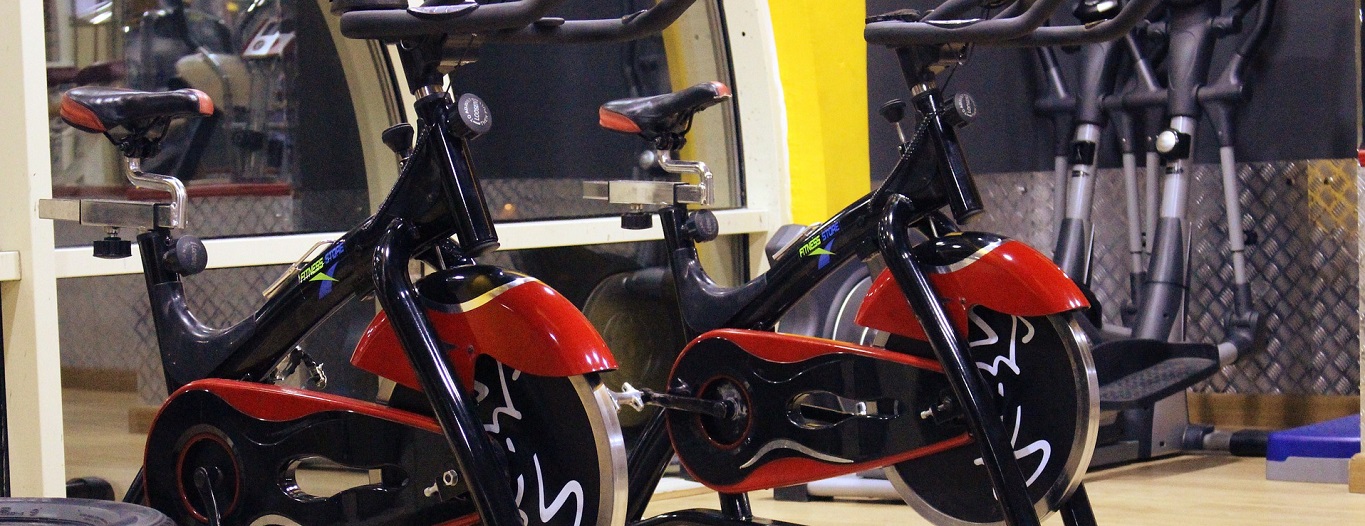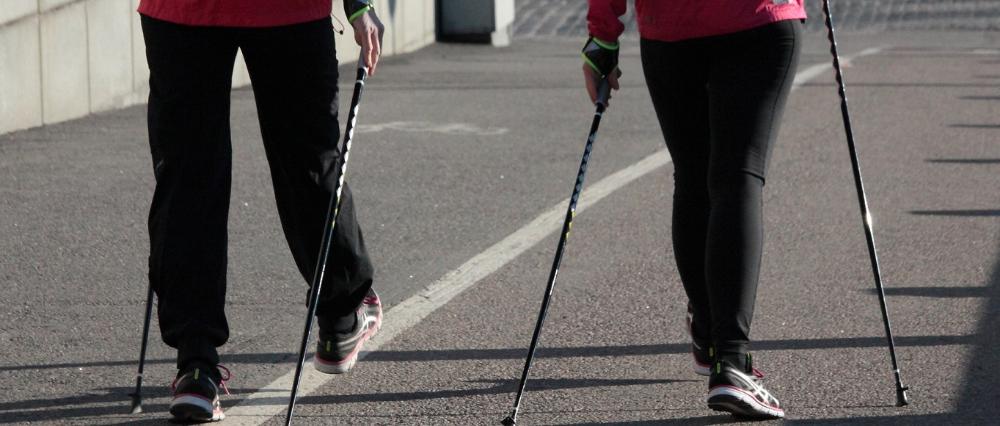Publications 2018

CERG's research articles published in 2018
Read the results from our publications from 2018 – and from publications where our researchers have contribute.
Click here to check out the results from our publications after 2018
- How can high fitness protect against metabolic diseases?
- Could a litte exercise improve skeletal muscle metabolism?
- Also healthy people avoid heart attacks by staying fit
- Is the maximum heart rate higher with lower fitness?
- Motivational interviewing helps stroke patients maintain physical activity
- 4x4 intervals improve fitness and body composition in psoriasis arthritis
- Increased risk of dementia in physically inactive persons with high psychological distress
- Lived longer after increasing the PAI score
- What kind of exercise does older adults prefer?
- Can exercise restore normal muscle function in heart failure?
- Also heart patients with 100 PAI live longer
- Should individuals with atrial fibrillation exercise?
- Which older adults are more likely to drop out of an exercise program?
- Does weather influence physical activity in the elderly?
- Can physical activity prevent atrial fibrillation?
- Can exercise prevent newborns' cardiac dysfunction following obese pregnancies?
- Exercise is linked to less dementia-related death
- How to exercise with peripheral artery disease
- The fit and happy live longer
- Heart patients live longer if they stay physically active over time
- Heart failure: Higher increase in oxygen uptake following high intensity interval training
- Effective high intensity interval training in obese children
- Rats escaped atrial fibrillation following high intensity interval training
- Should heart patients exercise the day before surgery?
- Obese children strengthen week hearts by exercising
- Why do failing hearts struggle during strenous acitivty?
Rats born with high aerobic capacity have more oxidized proteins in skeletal muscle. Many of these oxidized proteins are important regulators of the oxidative metabolism, including some essential metabolic enzymes. The findings bring novel insight into some of the processes that might explain the beneficial effects of high cardiorespiratory fitness on metabolism.
We have used mass-spectrometry-based proteomic analysis to compare oxidative post-translational modifications of proteins in rats bred for high and low aerobic capacity. The article is a result of the UTFORSK partnership between CERG and the University of Sao Paulo, Brazil.
Two weekly sessions of high-intensity interval training over a long period have marginal impact on leg muscle metabolism in rats. The reason might be that the exercise volume is too low to increase fitness. Rats born with high aerobic capacity had a more favorable metabolic profile than rats born with low aerobic capacity, and ageing also affected the metabolism negatively.
The study includes rats that have been bred to either low or high cardiorespiratory fitness for 30 generations. Rats from both fitness groups were randomly selected to exercise or no exercise, and we measured both fitness and skeletal muscle metabolism after three and eleven months of exercise. High inborn fitness associated with higher levels of glutamine and glutamate and lower levels of lactate, indicating more effective glucose oxidation and higher energy metabolism.
Even if you have no symptoms of a life-style disease today, low cardiorespiratory fitness could be a warning sign of a future heart attack. We found a strong link between higher fitness and reduced risk of a coronary event during the next nine years in a very healthy sample of adults.
The results are based on a gold-standard maximal exercise test of peak oxygen uptake in 4,527 men and women. None of them had previous cardiovascular or lung disease, cancer or hypertension, and most were considered to have a low ten-year risk of cardiovascular disease. Even so, 147 participants had a heart attack or were diagnosed with angina pectoris by 2017. The 25 % who measured the highest fitness levels had half the risk compared to those with the lowest fitness levels.
Healthy non-athletes almost reach their true maximum heart rate during an all-out test of maximum oxygen uptake. In our research, we usually add five heart beats to the highest heart rate achieved during a cardiopulmonary exercise test, but according to our new results that is three beats too many. The study also indicates that women and men have similar maximum heart rates, and that persons with below-average fitness generally have higher maximum heart rates than fitter persons.
The study includes 107 men and women between 22 and 70 years of age. They all had their maximum oxygen uptake tested at our lab, and then performed a standardized maximum heart rate test a few days later. The results show that the real maximum heart rate was 2.2 beats higher per minute than the maximum heart rate achieved during the test of oxygen uptake.
Patients with stroke who receive individualized coaching over time maintain good adherence to regular physical activity and exercise. The study includes patients with mild or moderate impairements after stroke, and the results indicate that coaching and motivational interviewing help keep the patients active for at least one and a half year.
Once a month, each of the 186 stroke patients in the study were encouraged by a physical therapist to be physically active for at least 30 minutes every day, and to perform at least 45 minutes of more structured exercise each week. More than half achieved the recommended amount of activity each month, but the intensity was generally lower than advised. The study was mainly conducted by researchers from the Geriatrics, Movement and Stroke research group at NTNU.
Eleven weeks of 4x4 interval training on a stationary bicycle improved cardiopulmonary fitness substantially in patients with the rheumatic disease psoriasis arthritis. The participants randomized to exercise also reduced their abdominal fat more than those told not to change their activity habits.
The patients were followed up again six months after the end of the organized exercise sessions, and the increase in fitness was maintained in the exercise group. A total of 61 persons participated in the study. Psoriasis arthritis is a chronic inflammatory disease, and patients are at increased risk of cardiovascular disease.
The combination of low physical activity and many symptoms on anxiety and depression at mid-life seems to increase the risk of dementia. For instance, physically active middle-aged persons without psychological distress had 37 % reduced risk of developing dementia compared to inactive persons with high psychological distress.
We followed nearly 29,000 individuals between 30 and 60 years of age from the first HUNT Study in the middle of the 1980s. Those who reported to exercise with moderate intensity or higher at least once a week had substantially reduced risk of being diagnosed with dementia between 1995 and 2011. This was true for participants with few symptoms of anxiety and depression, and for participants with many symptoms.
Even if you exercise too little to achieve 100 weekly PAI, it's not too late to start now. We looked at how increasing the PAI score over time affected mortality, and found that those who increased from less than 100 PAI a week in the first survey up to at least 100 PAI a week in the next survey eleven years later had lower risk of dying early. In fact, they gained more than six years compared to those who stayed below 100 PAI over time. The benefits of an increased PAI score was especially high in those who had less than 50 weekly PAI at the first survey.
Read more about PAI (Personal Activity Intelligence)
The lowest risk was found in those who were physically active enough to reach 100 PAI or more at both surveys. These participants gained more than eight years, and both the risk of dying early from any cause and from cardiovascular disease was substantially reduced. The study includes almost 25,000 participants who attended both the HUNT1 and HUNT2 surveys in the mid-1980s and mid-1990s. Almost 5000 of them died during the follow-up period until 2015.
More than half of the self-reported activity among participants in the moderate intensity exercise group of the Generation 100 Study was performed as walking. Walking was also the most popular activity among the participants in the high intensity exercise group, but these participants did more cycling and jogging compared to the moderate group. Moreover, the findings show that older adults are able to perform high intensity exercise without strict supervision.
Both groups preferred to exercise outdoors, and only one third of the sessions were performed indoors. We also found that women more often than men exercised together with others. The information is gathered from exercise diaries from the first year of the Generation 100 Study, and includes almost 70 000 exercise logs in total.
Diastolic heart failure in rats leads to smaller and weaker leg muscles with reduced blood flow. Neither intensive nor moderate exercise for two months normalizes these impairments. The rat model in the study resembles human heart failure with obesity, hypertension and diabetes, and we believe that the total disease burden could be too high for exercise to have an impact on the skeletal musculature after only eight weeks.
Even so, the rats improved their aerobic capacity significantly following exercise, and we speculate that this beneficial change could be a result of healthier blood vessels. The study compares two calf muscles in lean, healthy rats and obese rats with diastolic heart failure. The rats with heart failure were further randomized to three groups, of which two exercise at moderate or high intensity, respectively.
Also persons with cardiovascular disease should aim for 100 PAI to live longer. PAI is short for Personal Activity Intelligence, and we have previously shown that those who achieve 100 PAI or more every week live for an average of almost five years longer than others. Our new restults show that this is also true for heart and stroke patients.
We estimated PAI in more than 3000 participants who reported previous myocardial infarction, angina or stroke in the HUNT1 Study, and followed them for up to 30 years. Those who achieved 100 PAI or more had 36 % lower risk of dying from cardiovascular causes compared to inactive patients. They also lived for an average of five years longer than those who earned less than 100 PAI. To achieve 100 PAI was a better predictor of future health benefits than achieving today's exercise recommendations.
Individuals with atrial fibrillation should have individualized exercise based on an evaluation of underlying conditions. Together with colleagues at Bærum hospital, we sum up the current evidence on exercise effects in persons with atrial fibrillation.
One observational registry study shows that persons with atrial fibrillation live longer if they exercise regularly. Moreover, six smaller studies show beneficial effect of three months exercise on physical capacity, burden of atrial fibrillation and quality of life. There is a lack of data on safety of exercise and exercise in athletes with atrial fibrilllation.
Less than 15 % of the 1500 participants dropped out of the Generation 100 study during the first three years. Low education, low grip strenght, low cardiorespiratory fitness and low levels of physical activity were significant predictors of dropping out. Participants with reduced memory status were also more likely to drop out. The results give important information about potential factors that increase the risk for dropping out of long-term exercise programs in older adults..
The Generation 100 study aims to find out if exercise can give older adults longer and healthier lives. The participants are randomized to three group, of which two are exercise groups. Our results also show that participants randomized to exercise – and thus more regular follow-up appointments – aslo were more likely to drop out than those randomized to the control group.
Unfit older adults are less physically active during rain or snow, whereas fit older adults don't seem to let precipitation influence activity levels. Moreover, older adults are more physically active with increasing temperatures. The findings suggest that bad weather might be a barrier towards physical activity in unfit older adults.
To find these results, we studied accelerometer data from 1291 participants in the Generation 100 study. Hour-to-hour data on temperature and precipitation were collected from the Norwegian Meteorological Institute.
Obese and inactive persons had almost double the risk of atrial fibrillation compared to those who were normal weight and highly physically active. On the other hand, the risk was only increased by approximately 50 % in those who were obese and active. Thus, it looks like physical activity modifies the risk of atrial fibrillation in obese individuals.
We included more than 43 000 Norwegian men and women who participated in the third wave of the Nord-Trøndelag Health study between 2006 and 2008. By 2015, almost 1500 of them had a confirmed diagnosis of atrial fibrillation collected from hospital registers. Increasing levels of physical activity were linked to gradually lower risk of atrial fibrillation. Further analysis showed that this was especially true for obese persons.
In this study, exercise during pregnancy did not significantly prevent impaired cardiac function in newborns of obese women. There was, however, a small but consistent tendency towards slightly better cardiovascular measures in the exercise group. Thus, the reason for the lack of significant effects could be that many of the women exercised less than we asked them to, and that the study included quite few women.
55 women with a pre-pregnancy BMI of at least 28 kg/m2 participated in the trial, and half of them were randomized to four weekly exercise sessions consisting of both moderate intensity endurance and strength training from gestational week 14 and throughout pregnancy. However, the women only exercised for a mean of two times a week. Children in both groups were born with weaker hearts than newborns of normal weight mothers.
Physical activity seems to protect against demetia-related mortality both in persons with and without symptoms of anxiety or depression. We followed 37,000 Norwegians for up to 20 years, and exercise with high intensity was linked to the lowest risk of dying of or with dementa during follow-up. Among those who reported several symptoms of psychological distress, regular high-intensity activity was assoicated with less than half the risk of dementia-related death.
The study includes middle-aged and older women and men from seven of the largest population-based studies performed in Norway between 1994 and 2002. In total, more than 900 of the participants died of or with dementia before 2015.
Higher quality of life, increased fitness and reduced disease progression are only some of the benefits persons with intermittent claudication could expect from exercise. An exercise program could help the patients increase their maximum and pain-free walking distance, and exercise is effective before as well as after invasive procedures to remove atherosclerotic plaques from the clogged arteries.
Our researchers Inger-Lise Aamot and Øivind Rognmo have summed up everything we currently know about exercise for patients with peripheral artery disease, where the blood vessels in the legs are so occluded that physical activity leads to severe calf pain due to lack of oxygen. The review article describes walking as the most effective form of exercise to increase walking distance. However, cycling, walking stairs, arm cranking and different strength training exercises are also beneficial.
To stay fit and avoid depressive symptoms could be of great importance for health. Participants who maintained high fitness and reported low symptoms of depression over time had the lowest risk of dying during follow-up. The study is based on information from more than 15,000 middle-aged women and men from the Nord-Trøndelag Health Study.
We used our Fitness Calculator to estimate fitness for all participants. Those who had high fitness and low symptoms of depression at both the two surveys they attended had only half the risk of dying during seven years of follow-up, compared to those who reported persistently high levels of depressive symptoms and had low estimated fitness over time. Fit persons who improved symptoms of depression from the first to last survey also had reduced risk of early death.
Heart patients live longer if they are physically active over time, whereas weight loss is not associated with reduced risk of premature death. Sustained physical activity according to guidelines seems to be particularly protective against deadth from all causes and cardiovascular disease, compared to staying physically inactive.
The results are based on The Nord Trøndelag Health Study, and we followed more than 3,300 heart patients for up to 30 years. All of them had a previous heart attack or angina, and participated in at least two health surveys between 1984 and 2008. Those who stayed physically active over time had the lowest risk of dying during follow-up, but also those who went from being inactive to sufficiently physically active had reduced risk.
High intensity interval training improves cardiorespiratory fitness mer in patients with heart failure than moderat exercise. A new meta-analysis of 13 trials has compared the two modes of exercise for patients with heart failure and reduced ejection fraction. Quality of life improved similarly with moderate and high intensity training.
CERG's Professor Øyvind Ellingsen helped Brazilian researchers with the review. The analysis includes trials with several different modes of high intensity interval training, with intervals ranging from 30 seconds to 15 minutes duration. When the researchers compared isocaloric protocols only, high intensity interval training was no longer significantly superior to moderate continous training.
Both 4x4 interval training and continuous training with moderate intensity for three months improved cardiorespiratory fitness inn obese children. However, high intensity training was most effective.
99 obese children participated in the study. They were aged between seven and 16, og randomly allocated to three groups. All the children and their families were given nutritional advice, and the children in two groups exercised either 4x4 intervals or continuously at at more moderate intensity. Exercise had no effect on body weight or several other traditional risk factors for cardiovascular disease.
Aerobic interval training prevents susceptibility to atrial fibrillation in middle-aged rats. Sustained atrial fibrillation was not induced in any of the 14 rats who exercised for 16 weeks, compared to four of the eleven rats who did not exercise.
We compared middle-aged rats who exercised for 16 weeks with both young and middle-aged rats who did not exercise. After the exercise intervention, the middle-aged rats had the same aerobic fitness as young, sedentary rats. We also examined the rat hearts, and found that exercise had increased the atrial conduction velocity, which could explain the reduced vulnerability to atrial fibrillation.
One bout of exercise 24 hours before cardiac surgery does not protect the heart, and might actually be harmful. Compared to no exercise, exercise increased the levels of a marker related to programmed cell death in the heart prior to surgery, and also reduced the function of the energy-producing mitochondria after surgery.
Acute exercise as preconditioning before surgery has shown promising results in rats, and we wanted to investigate if exercise just prior to surgery offers cardioprotection in humans as well. Half of the 20 patients in the study performed moderate intensity exercise the day before elective coronary artery bypass grafting at St. Olavs hospital.
Three months of exercise normalized the heart's pump function at rest in obese children! High intensity interval training was even better for the hearts than moderate exercise, but both exercise modalities were more effective than nutrition advice only.
Obese children have reduced heart function compared to their healthy-weight counterparts. Our new results highlight the importance of structured exercise programs, including high intensity interval training, to improve heart health in pediatric obesity. A total of 99 Norwegian and Australian children participated in the trial.
For the first time, we have collected pieces from nine hearts of patients with heart failure after a myocardial infarction, made the pieces beat as fast as hearts do during physical activity, and compared the function with heart pieces from eight stable heart patients without an infarction.
The results show that the function of the failing hearts almost broke down completely as the heart frequency increased. The intracellular calcium handling was severly impaired at high frequencies. Calcium is important for the regulation of contraction as well as relaxation of the cardiomyocytes.
List of scientific publications in 2018
Souza, R. W., Alves, C. R., Medeiros, A., Rolim, N., Silva, G. J., Moreira, J. B., Alves, M. N., Wohlwend, M., Gebriel, M., Hagen, L., Sharma, A., Koch, L. G., Britton, S. L., Slupphaug, G., Wisløff, U., & Brum, P. C. (2018). Differential regulation of cysteine oxidative post-translational modifications in high and low aerobic capacity. Scientific reports, 8(1), 17772.
Shi, M., Ellingsen, Ø., Bathen, T. F., Høydal, M. A., Koch, L. G., Britton, S. L., Wisløff, U., Stølen, T., & Esmaeili, M. (2018). Skeletal muscle metabolism in rats with low and high intrinsic aerobic capacity: Effect of aging and exercise training. PLOS ONE, 13(12), e0208703.
Letnes, J. M., Dalen, H., Vesterbekkmo, E. K., Wisløff, U., & Nes, B. M. (2018). Peak oxygen uptake and incident coronary heart disease in a healthy population: the HUNT Fitness Study European Heart Journal, ehy708
Berglund, I. J., Sørås, S. E., Relling, B. E., Lundgren, K. M., Kiel, I. A., & Moholdt, T. (2018). The relationship between maximum heart rate in a cardiorespiratory fitness test and in a maximum heart rate test. Journal of Science and Medicine in Sport.
Ozemek, C., Laddu, D. R., Lavie, C. J., Claeys, H., Kaminsky, L. A., Ross, R., Wisløff, U., Arena, R., & Blair, S. N. (2018). An Update on the Role of Cardiorespiratory Fitness, Structured Exercise and Lifestyle Physical Activity in Preventing Cardiovascular Disease and Health Risk. Progress in Cardiovascular Diseases.
Gunnes, M., Langhammer, B., Aamot, I. L., Lydersen, S., Ihle-Hansen, H., Indredavik, B., Kristine H. Reneflot, Schroeter, W., & Askim, T. (2018). Adherence to a Long-Term Physical Activity and Exercise Program After Stroke Applied in a Randomized Controlled Trial. Physical therapy.
Thomsen, R. S., Nilsen, T. I. L., Haugeberg, G., Bye, A., Kavanaugh, A., & Hoff, M. (2018). Effect of high-intensity interval training on cardiovascular disease risk factors and body composition in psoriatic arthritis: a randomised controlled trial. RMD Open, 4(2), e000729.
Zotcheva, E., Bergh, S., Selbæk, G., Krokstad, S., Håberg, A. K., Strand, B. H., & Ernstsen, L. (2018). Midlife Physical Activity, Psychological Distress, and Dementia Risk: The HUNT Study. Journal of Alzheimer's Disease, (Preprint), 1-9.
Tucker, W. J., Beaudry, R. I., Liang, Y., Clark, A. M., Tomczak, C. R., Nelson, M. D., Ellingsen, Ø., & Haykowsky, M. J. (2018). Meta-analysis of exercise training on left ventricular ejection fraction in heart failure with reduced ejection fraction: a 10–year update. Progress in cardiovascular diseases.
Kieffer, S. K., Croci, I., Wisløff, U., & Nauman, J. (2018). Temporal Changes in a Novel Metric of Physical Activity Tracking (Personal Activity Intelligence) and Mortality: The HUNT Study, Norway. Progress in Cardiovascular Diseases.
Reitlo, L. S., Sandbakk, S. B., Viken, H., Aspvik, N. P., Ingebrigtsen, J. E., Tan, X., Wisløff, U., & Stensvold, D. (2018). Exercise patterns in older adults instructed to follow moderate-or high-intensity exercise protocol–the generation 100 study. BMC Geriatrics, 18(1), 208.
Bowen, T. S., Herz, C., Rolim, N. P., Berre, A. M. O., Halle, M., Kricke, A., Linke, A., da Silva, G. J., Wisløff, U., & Adams, V. (2018). Effects of endurance training on detrimental structural, cellular, and functional alterations in skeletal muscles of heart failure with preserved ejection fraction. Journal of cardiac failure, 24(9), 603-613.
Kieffer, S. K., Zisko, N., Coombes, J. S., Nauman, J., & Wisløff, U. (2018) Personal Activity Intelligence and Mortality in Patients with Cardiovacular Disease: The HUNT Study. Mayo Clinic Proceedings, 92(5), 1191-1201
Bozi, L. H., Takano, A. P., Campos, J. C., Rolim, N., Dourado, P. M., Voltarelli, V. A., Wisløff, U., Ferreira, J. C. B., Barreto-Chaves, M. L. M., & Brum, P. C. (2018). Endoplasmic reticulum stress impairs cardiomyocyte contractility through JNK-dependent upregulation of BNIP3. International Journal of Cardiology.
Myrstad, M., Malmo, V., Ulimoen, S. R., Tveit, A., & Loennechen, J. P. (2018). Exercise in individuals with atrial fibrillation. Clinical Research in Cardiology, 1-8.
Viken, H., Reitlo, L. S., Zisko, N., Nauman, J., Aspvik, N. P., Ingebrigtsen, J. E., Wisløff, D., & Stensvold, D. (2018). Predictors of Dropout in Exercise Trials in Older Adults. Medicine and science in sports and exercise.
Bjørnland, T., Bye, A., Ryeng, E., Wisløff, U., & Langaas, M. (2018). Powerful extreme phenotype sampling designs and score tests for genetic association studies. Statistics in medicine.
Aspvik, N. P., Viken, H., Ingebrigtsen, J. E., Zisko, N., Mehus, I., Wisløff, U., & Stensvold, D. (2018). Do weather changes influence physical activity level among older adults?–The Generation 100 study. PloS one, 13(7), e0199463.
Garnvik, L. E., Malmo, V., Janzsky, I., Wisløff, U., Loennechen, J. P., & Nes, B. M. (2018). Physical activity modifies the risk of atrial fibrillation in obese individuals: The HUNT3 study. European Journal of Preventive Cardiology. 2047487318784365
Nyrnes, S. A., Garnæs, K. K., Salvesen, Ø., Timilsina, A. S., Moholdt, T., & Ingul, C. B. (2018). Cardiac function in newborns of obese women and the effect of exercise during pregnancy. A randomized controlled trial. PloS one 13(6): e0197334
Zotcheva, E., Selbæk, G., Bjertness, E., Ernstsen, L., & Strand, B. H. (2018). Leisure-time physical activity is associated with reduced risk of dementia-related mortality in adults with and without psychological distress: The Cohort of Norway. Frontiers in Aging Neuroscience, 10, 151.
Aamot, I. L., & Rognmo, Ø. (2018) Exercise therapy in intermittent claudication. E-Journal of Cardiology Practice
Carlsen, T., Salvesen, Ø., Sui, X., Lavie, C. J., Blair, S. N., Wisløff, U., & Ernstsen, L. (2018). Long-term Changes in Depressive Symptoms and Estimated Cardiorespiratory Fitness and Risk of All-Cause Mortality: The Nord-Trøndelag Health Study. Mayo Clinic Proceedings.
Tjønna, A. E., Ramos, J. S., Pressler, A., Halle, M., Jungbluth, K., Ermacora, E., Salvesen, Ø., Rodrigues, J., Bueno jr., C. R., Munk, P. S., Coombes, J., & Wisløff, U. (2018). EX-MET study: exercise in prevention on of metabolic syndrome–a randomized multicenter trial: rational and design. BMC public health, 18(1), 437.
Moholdt, T., Lavie, C. J., & Nauman, J. (2018). Sustained Physical Activity, Not Weight Loss, Associated With Improved Survival in Coronary Heart Disease. Journal of the American College of Cardiology, 71(10), 1094-1101.
Neto, M. G., Durães, A. R., Conceição, L. S. R., Saquetto, M. B., Ellingsen, Ø., & Carvalho, V. O. (2018). High intensity interval training versus moderate intensity continuous training on exercise capacity and quality of life in patients with heart failure with reduced ejection fraction: A systematic review and meta-analysis. International Journal of Cardiology.
Dias, K. A., Ingul, C. B., Tjønna, A. E., Keating, S. E., Gomersall, S. R., Follestad, T., Hosseini, M. S., Hollekim-Strand, S. M., Ro, T. B., Haram, M., & Huuse, E. M., Davies, P. S. W., Cain, P. A., Leong, G. M., & Coombes, J. S. (2017). Effect of High-Intensity Interval Training on Fitness, Fat Mass and Cardiometabolic Biomarkers in Children with Obesity: A Randomised Controlled Trial. Sports Medicine, 1-14.
Malmo, V., Kelly, A., Stolen, T., Garten, K. S., Rolim, N., Wisløff, U., Smith, G., & Loennechen, J. P. (2018). Aerobic interval training prevents age-dependent vulnerability to atrial fibrillation in rodents. Frontiers in Physiology, 9, 206.
Ingul, C. B. (2018). Low volume, high intensity: Time-efficient exercise for the treatment of hypertension. European Journal of Preventive Cardiology, 2047487318760040.
Smenes, B. T., Bækkerud, F. H., Slagsvold, K. H., Hassel, E., Wohlwend, M., Pinho, M., Høydal, M., Wisløff, U., Rognmo, Ø., & Wahba, A. (2018). Acute exercise is not cardioprotective and may induce apoptotic signalling in heart surgery: a randomized controlled trial. Interactive cardiovascular and thoracic surgery.
Ingul, C. B., Dias, K. A., Tjonna, A. E., Follestad, T., Hosseini, M. S., Timilsina, A. S., Hollekim-Strand, S. M., Ro, T. B., Davies, P. S. W., Leong, G. M., & Coombes, J. S. (2018). Effect of High Intensity Interval Training on Cardiac Function in Children with Obesity: a Randomised Controlled Trial. Progress in Cardiovascular Diseases.
Høydal, M. A., Kirkeby‐Garstad, I., Karevold, A., Wiseth, R., Haaverstad, R., Wahba, A., Stølen, T., L. Contu, R., Condorelli, G., Ellingsen, Ø., Smith, G. L., Kemi, O. J., & Wisløff, U. (2018). Human cardiomyocyte calcium handling and transverse tubules in mid‐stage of post‐myocardial‐infarction heart failure. ESC heart failure.
Send us an e-mail:
cerg-post@mh.ntnu.no
Send us regular mail:
NTNU, Fakultet for medisin og helsevitenskap
Institutt for sirkulasjon og bildediagnostikk
Postboks 8905
7491 Trondheim
Visit us:
St. Olavs Hospital
Prinsesse Kristinas gt. 3
Akutten og Hjerte-lunge-senteret, 3. etg.
7006 Trondheim


























